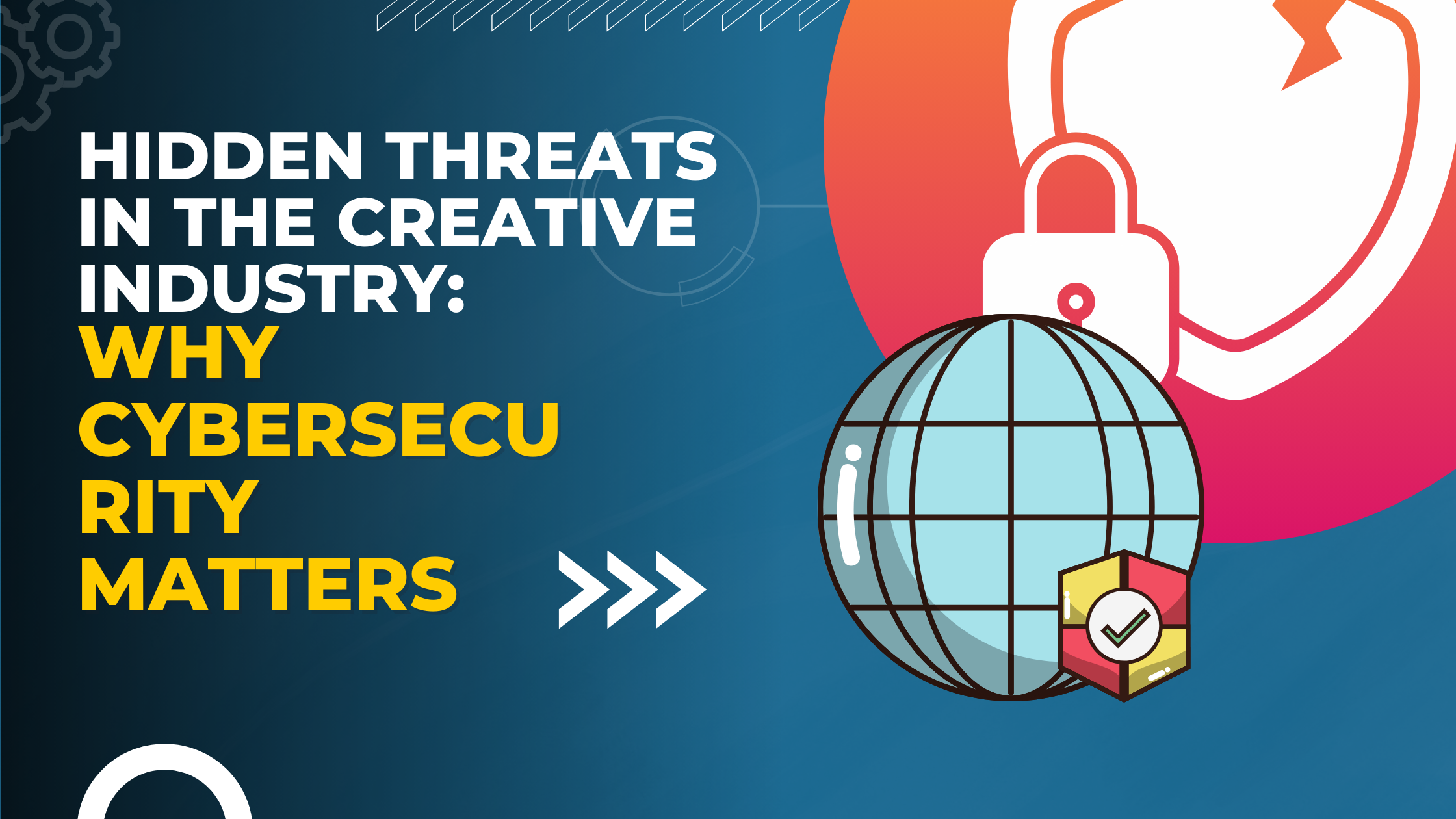Hidden Threats in the Creative Industry: Why Cybersecurity Matters
The creative industry, encompassing everything from film production and graphic design to publishing and advertising, thrives on innovation and collaboration. But beneath its vibrant exterior lies a growing vulnerability: cyber threats. As creatives increasingly rely on digital tools, cloud storage, and remote collaboration, the industry has become a prime target for cybercriminals. Here’s why cybersecurity should be a top priority for the creative sector and how to address its unique challenges.
1. The Value of Intellectual Property
Intellectual property (IP) is the lifeblood of the creative industry. From unreleased movie scripts and design concepts to marketing campaigns and manuscripts, these assets are highly valuable—and highly vulnerable.
Threats:
- Theft or leaks of unreleased content.
- Unauthorized distribution of copyrighted materials.
- Ransomware attacks targeting sensitive projects.
Protective Measures:
- Encrypt files containing sensitive IP.
- Use access controls to limit who can view or edit critical assets.
- Regularly back up data to recover in case of a ransomware attack.
2. Risks in Remote Collaboration
The rise of remote work has revolutionized the creative industry, but it also introduces new cybersecurity challenges. Collaborative tools and cloud platforms can become entry points for cyberattacks if not properly secured.
Threats:
- Unauthorized access to shared files.
- Phishing scams targeting remote workers.
- Malware embedded in third-party tools.
Protective Measures:
- Implement Multi-Factor Authentication (MFA) for all accounts.
- Train employees to recognize phishing attempts.
- Use secure file-sharing platforms with end-to-end encryption.
3. Social Engineering Attacks
Creatives often work in fast-paced environments where quick decisions are the norm. Cybercriminals exploit this urgency through social engineering tactics.
Common Scenarios:
- Fake client emails requesting access to projects.
- Impersonation of executives to authorize wire transfers.
- Malicious links disguised as design references or client feedback.
Protective Measures:
- Verify unexpected requests via a secondary communication channel.
- Train teams to spot social engineering tactics.
- Deploy email filtering tools to block suspicious messages.
4. Third-Party Vulnerabilities
The creative industry often relies on freelancers, agencies, and third-party vendors. While collaboration is essential, it also expands the attack surface for cyber threats.
Risks:
- Weak security practices of third-party vendors.
- Compromised credentials leading to data breaches.
- Malware introduced through shared tools or files.
Protective Measures:
- Vet vendors for strong cybersecurity protocols.
- Use contractual agreements to enforce data protection standards.
- Monitor and audit third-party access to your systems.
5. The Impact of Downtime
In an industry driven by tight deadlines, downtime caused by a cyberattack can have severe consequences. From project delays to reputational damage, the ripple effects can be devastating.
Common Causes:
- Ransomware attacks that lock critical files.
- Distributed Denial-of-Service (DDoS) attacks on online platforms.
- Insider threats from disgruntled employees.
Protective Measures:
- Develop an incident response plan to minimize downtime.
- Invest in robust firewalls and intrusion detection systems.
- Regularly update software to patch vulnerabilities.
6. Compliance and Legal Repercussions
Data protection regulations such as GDPR and CCPA apply to many aspects of the creative industry. Non-compliance can result in hefty fines and loss of client trust.
Key Concerns:
- Mishandling of client data.
- Insufficient data breach notification processes.
- Failure to secure customer or employee information.
Protective Measures:
- Conduct regular audits to ensure compliance with data protection laws.
- Implement robust data handling and storage protocols.
- Provide transparency about your cybersecurity practices to clients.
Conclusion
The creative industry’s reliance on digital tools and collaborative environments makes it uniquely vulnerable to cyber threats. By recognizing these risks and taking proactive measures, organizations can protect their intellectual property, maintain trust, and ensure uninterrupted creativity. Cybersecurity is not just an IT issue—it’s a vital aspect of preserving the innovation and integrity that define the creative industry.
Don’t wait for a breach to act. Start building a secure digital foundation for your creative endeavors today.


